
Translating…
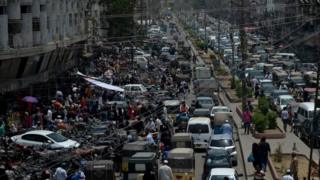 Picture copyright Getty Photography
Picture copyright Getty Photography Because the coronavirus pandemic swept by Asia, many international locations imposed strict lockdowns to discontinue the disease from spreading, particularly in most important cities.
From Beijing in China to Hanoi in Vietnam, cities suspended transport and ordered tens of millions of folks to conclude at home, leaving roads strangely empty.
The reduction in traffic on the roads had an unintended consequence – scientists observed a drastic fall in air air pollution phases in early 2020 over cities and industrial areas in Asia and in assorted places.
Now, as international locations in Asia cautiously ease their restrictions, traffic has returned to the roads and air pollution is spiking.
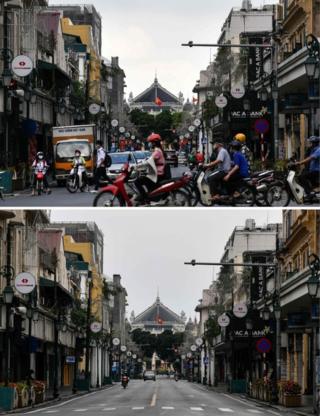 Picture copyright Getty Photography
Picture copyright Getty Photography 
“There were in actuality marked reductions in air air pollution all the draw in which by Asia,” Paul Monks, professor of air air pollution on the College of Leicester, told the BBC. “What we’re seeing now is a return to pre-Covid phases.”
Satellite files from Nasaand the European Rental Agency showed that, within the first three months of 2020, phases of nitrogen dioxide were far decrease than within the same length in 2019.
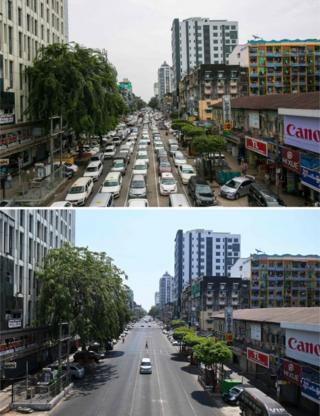 Picture copyright Getty Photography
Picture copyright Getty Photography Emitted by automobiles and all over industrial processes, nitrogen dioxide is a execrable gas that would possibly possibly irritate respiratory ailments, similar to asthma.
A extreme air pollutant, nitrogen dioxide isestimated to consequence within the deaths of spherical three million folks a twelve months. It is no longer a greenhouse gas but comes from the same actions that emit carbon dioxide, which contributes to global warming.
In China, the place the pandemic originated, nitrogen dioxide phases were 10% to 30% decrease than customary between January and February this twelve months,in accordance with Nasa.
The home agency acknowledged India, the place smog-crammed skies are customary within the glorious cities,observed nitrogen dioxide phases decrease by about 55% in Delhi from March 25 by April 25.
Two assorted compare,published within the Geophysical Compare Letters journal, stumbled on that nitrogen dioxide dropped up to 60% in northern China, western Europe and the US in early 2020.
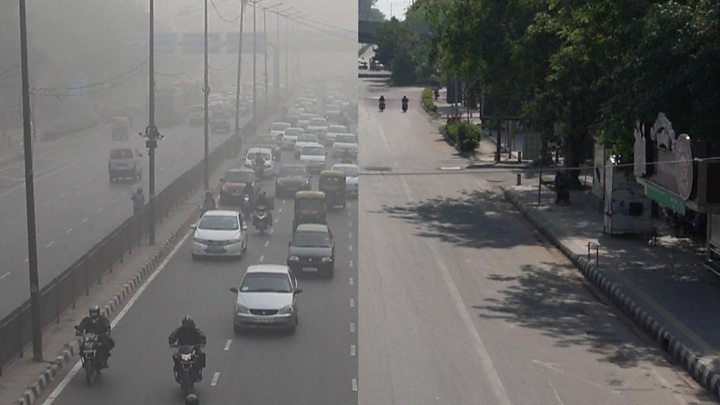
Media playback is unsupported on your instrument
Prof Monks acknowledged the pandemic has inadvertently given the sphere a gaze of what a pollutant-free economic system would possibly possibly survey like.
“This good points to what you would in actuality manufacture. Even as you happen to were to decarbonise transport, that’s what you would possibly possibly receive,” Prof Monks, the worn chair of the UK government’s science advisory committee on air quality, acknowledged.
 Picture copyright Getty Photography
Picture copyright Getty Photography But, as Asian international locations reboot their economies – resuming toddle interior and out of cities – air pollution phases maintain rebounded.
Records launched by Greenpeace Chinashowed that phases of toxic air pollution, including nitrogen dioxide, were increased in April compared with the same length final twelve months.
If international locations are fascinated by tackling air air pollution and local weather commerce, they maintain to “learn the teachings” of the pandemic, Prof Monks acknowledged.
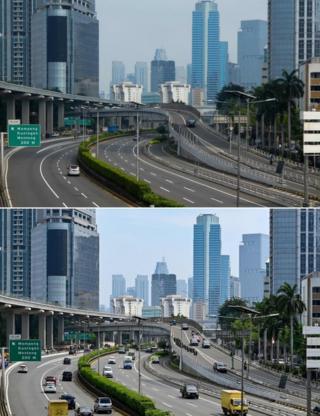 Picture copyright Getty Photography
Picture copyright Getty Photography In Europe, some international locations are taking go to decrease traffic jam,clamping down on vehicle exhaust.
The Italian city of Milan, shall we embrace,introduced it would remodel 35km (21.7 miles) of its streets into biking-pleasant areas over the summer season.
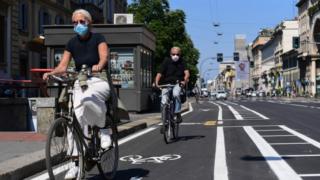 Picture copyright Getty Photography
Picture copyright Getty Photography Other international locations are taking a same draw all around the lockdown, installing non everlasting biking lanes and shutting roads off to automobiles.
“There is a brighter future available, however the local weather emergency has no longer long gone away. It has no longer been modified by the Covid emergency,” Prof Monks acknowledged.
All pictures copyright
